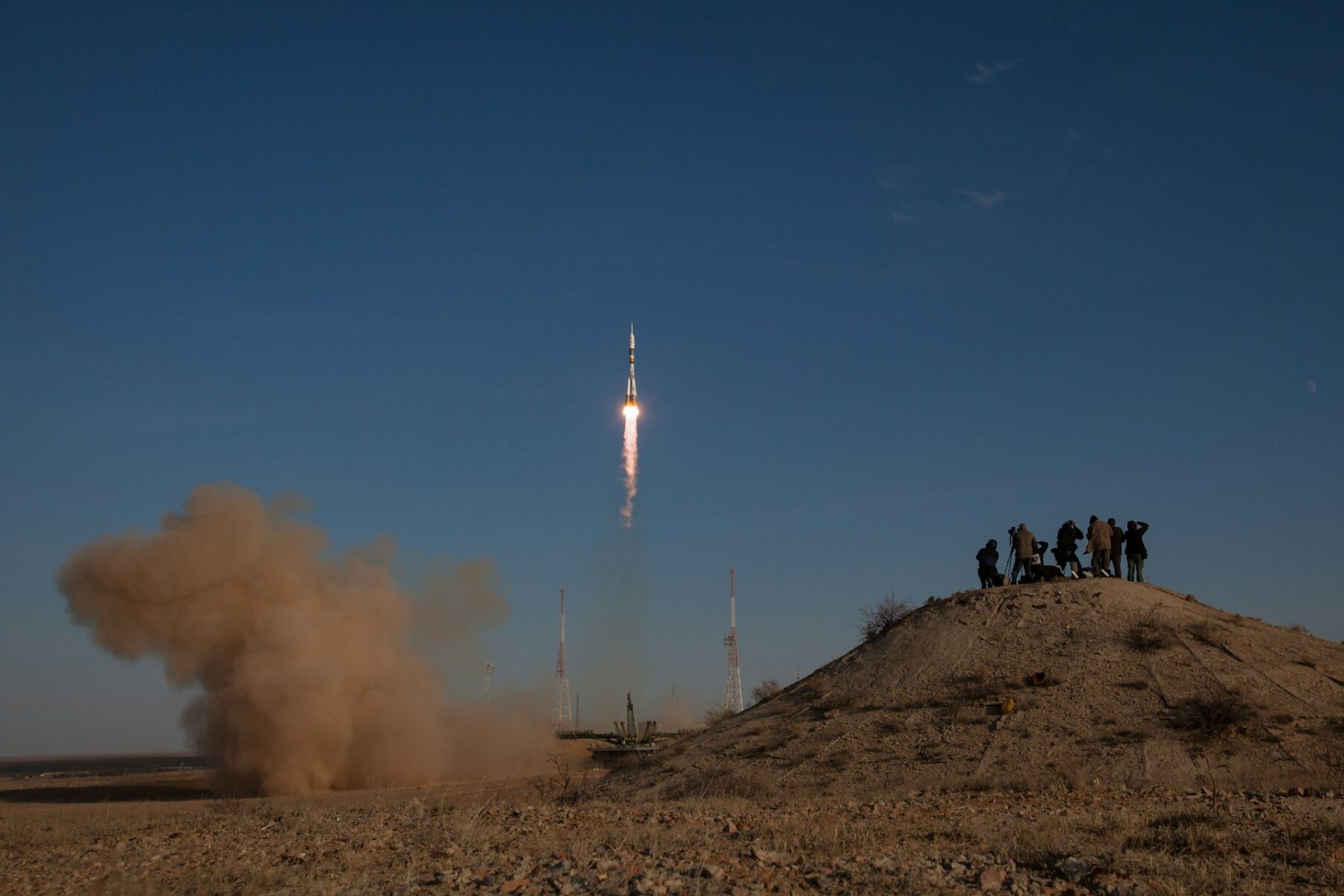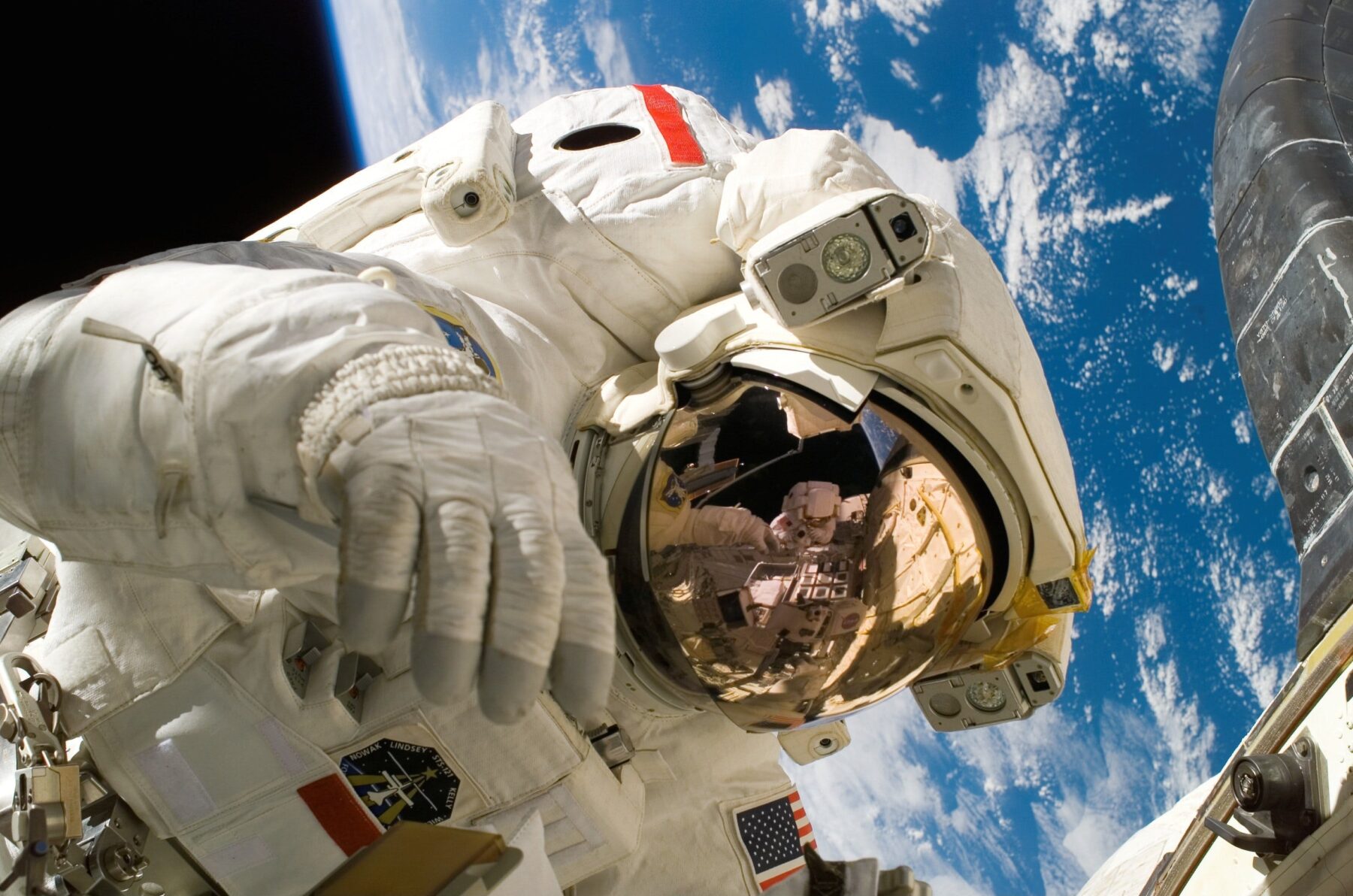Sleeping In Space: How Do Astronauts Do It?
6 min read
Last Modified 13 February 2024 First Added 8 February 2024
Picture drifting off to sleep weightless, surrounded by the silent expanse of space. For astronauts, this isn’t just a dream – it’s a nightly reality. As we delve into the peculiarities of sleeping in space, we uncover the fascinating adaptations and innovations that allow astronauts to rest amid the cosmic unknown!
Sleeping in space presents a unique set of challenges. Without gravity, there’s no sense of up or down, making traditional sleeping arrangements impractical. To counter this, astronauts have specially designed sleep systems; with new developments regularly being made in the field.
These systems often consist of sleeping bags or sleeping pods tethered to the spacecraft’s walls, providing stability in an otherwise weightless environment. Despite initial adjustments, many astronauts find the experience of floating in space surprisingly tranquil. It seems the absence of a gravitational pull and weightlessness makes for restorative sleep!

In the confined quarters of a spacecraft, sleeping arrangements are compact yet functional. Sleeping pods the size of a telephone booth serve as private sanctuaries for astronauts to recharge after long days of exploration and research.
Equipped with sleeping bags or restraints to prevent drifting, these sleeping quarters offer astronauts a sense of normality amidst the vast emptiness of space.
We’ve been lucky enough to speak with one astronaut, the USA’s very own Clayton Anderson – otherwise known as the Ordinary Spaceman. Here’s what he has to say about how well these work for rest:
“As I reached a repeatable rhythm of sorts in the sleep department, I would re-learn that the brain is an incredible thing. With several nights of decent sleep…under my belt, I discovered that, during those initial stages of falling asleep, my brain was telling my body I was lying on a mattress.
Slowly drifting off, I felt pressure points up and down the entire length of my spine as if I was back in Houston, lying horizontally on a firm, supporting mattress. Amazing!”


The simple answer is no, not really. With no real up or down, one of the intriguing aspects of sleeping in space is the freedom to sleep in any orientation. Without the constraints of gravity, astronauts can drift off to sleep vertically, horizontally, or even diagonally. The absence of gravitational force allows for flexibility in sleeping positions that is unparalleled on Earth.
Some astronauts prefer to secure themselves to a surface using restraints, while others float a little more freely, with looser ties to keep them comfortable without floating around too much.
Clayton had some words on the subject and how much it frees the body:
“You may sleep in any orientation you choose. Absent of gravity, the only true needs are adequate ventilation (including cooling), peace and a few tie-downs. The bed of choice is a sleeping bag, US vintage for shuttle fliers and Russian design on ISS. Both include a liner and zip-up front, providing adequate warmth, easy entry, and even easier exit. A final key ingredient is armholes, allowing sleeping astronauts to take on the appearance of a comatose, stationary zombie, arms extended forward and parallel to the ground.”
To maintain consistency and coordination during missions, astronauts adhere to the Coordinated Universal Time (UTC), a standardised timekeeping system used across the globe. By synchronising their activities with UTC, astronauts ensure seamless communication and coordination with mission control and other space agencies around the world.
This universal time standard helps to streamline operations and mitigate confusion that may arise from the multiple time zones across the Earth. This can make adjusting a bit tricky for some, much like how down on earth we can get affected by jet lag, but most find themselves able to reset their body clock and move on with the work at hand.
Everyone has their own routine for sleep, and even when drifting in orbit it’s important to maintain it. Here’s Clayton’s take:
“My evening ritual was always the same. After brushing my teeth and removing my clothing – everything except a pair of white boxer shorts – I ‘flew’ into my open-zippered sleeping bag. Maintaining my shuttle-born heads-up vertical orientation, I stuffed my arms through the ergonomically placed holes, closed the zipper about halfway and grabbed my paperback copy of Clive Cussler’s Sahara. Floating weightlessly, held in place only by the confines of my anchored sleeping bag, I continued my nightly assault on the adventures of Dirk Pitt and Al Giordino.
Essentially exhausted from the day’s combination of exercise, equipment maintenance, science experiments, and increasing CO2 build-up, sleep came easily – my eyelids heavy and beginning to close.”

When it comes to the latter, there’s a lot of research and development in the field. Instead of sleep, many look to see if humans would be able to hibernate to travel the millions of light years needed for deeper space exploration. Right now, the theory is growing, but it remains very much in the realm of science fiction.
As for naps, it can vary. Clayton has one last tidbit about his own experience floating above the Earth:
“I was not a napper in space as I am on Earth. As I recall, I only took a power nap once. Waiting for a connection with the folks at the Marshall Space Flight Center in Huntsville, Alabama, I was at my laptop, floating near my sleep station, reading emails. Feet firmly affixed within an over-designed foot restraint; I had no gravity to dictate any Earth-bound-like head bobs that could shake me back to reality. Only through watching the post-flight video did I catch myself falling backwards, as if in slow motion, floating at a 45-degree angle, arms crossed gently over my chest, snoozing like a champ!
“My sleep in space was, minus the lack of gravity, typical. I was frequently awakened by minor annoyances, just like on Earth. Unplanned fire alarms, energetic conversations from late-night Spanish revellers blasting through the communication system (but that’s another story!), and the need for a timely trip to the bathroom, were examples of random sleep disrupters similar to those experienced in everyday life on our home planet. Was it difficult to sleep in space? Not a chance! I wouldn’t change a minute of it.”
Even amidst the boundless expanse of the universe, the need for rest remains a fundamental aspect of human existence. So, the next time you gaze up at the night sky, take a moment to ponder the intrepid explorers peacefully slumbering among the stars, their dreams intertwined with the mysteries of the cosmos.